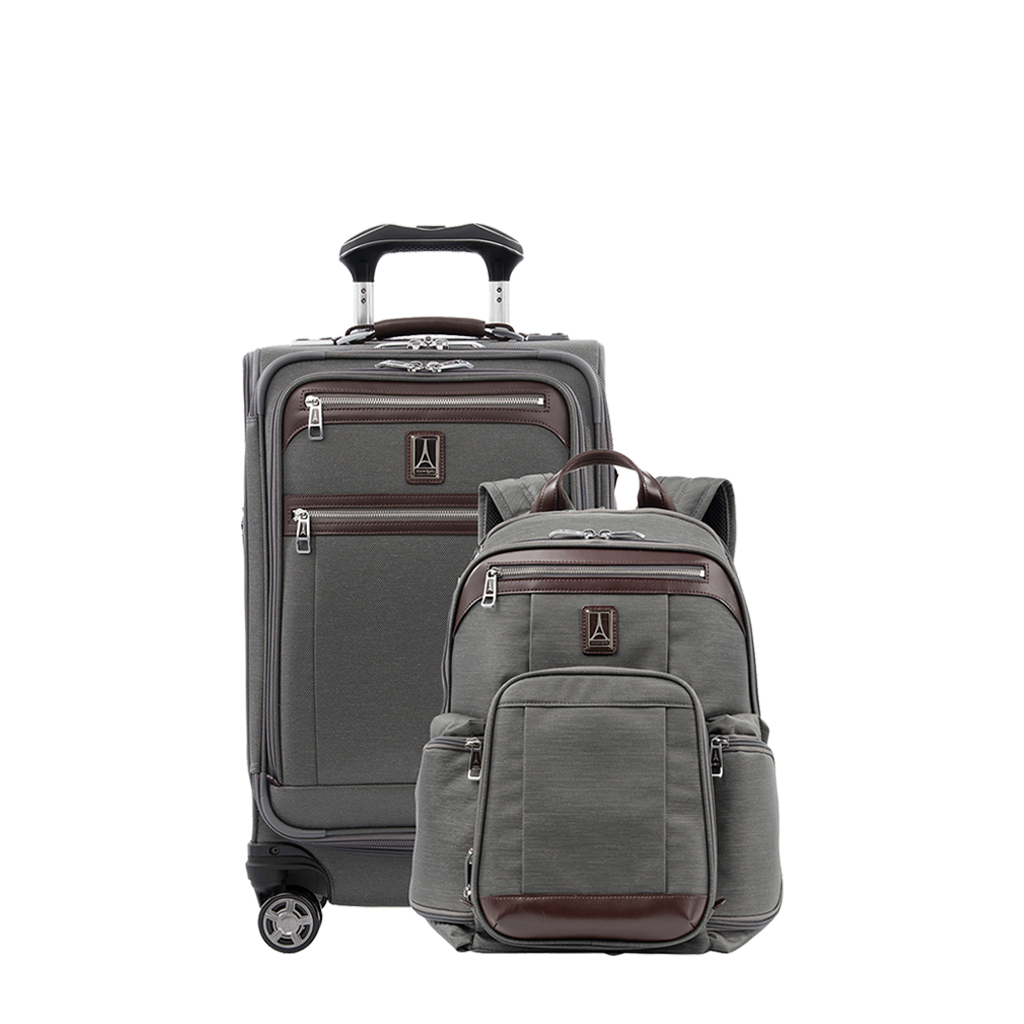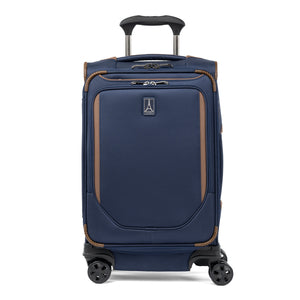Comment faire durer vos bagages plus longtemps

Toute personne qui voyage régulièrement connaît l'importance d'un bagage durable. Les valises et les sacs sont, après tout, conçus pour protéger nos biens contre les dommages. Les bagages sont exposés à toutes sortes de conditions météorologiques, ils sont heurtés, empilés dans les soutes à bagages et, d'une manière générale, ils sont malmenés à l'aller et au retour.
Il ne s'agit pas seulement des dommages causés par la manutention des bagages. Les bagagistes ont de très bons antécédents en matière de prévention des dommages aux bagages (SITA indique que sur les 4,27 milliards de bagages transportés chaque année, seuls 4,57 millions sont endommagés). L'usure normale réduit la durée de vie des bagages, tout comme les accidents, les éraflures, les rayures et autres dommages similaires. Heureusement, un peu de soin et d'attention suffisent à protéger vos bagages.
Quelle est la durée de vie d'un bagage ?
La durée de vie des bagages dépend de nombreux facteurs, notamment de la fréquence de vos voyages, de la qualité de vos bagages et de la façon dont vous les entretenez. Qualité supérieure,durables et de qualité supérieure peuvent durer plus de dix ans en cas d'utilisation fréquente. Les bagages de moins bonne qualité ont une durée de vie beaucoup plus courte.
Choisir des bagages bien faits
La durée de vie des bagages dépendant de leur qualité, il est important d'acheter des sacs de bonne facture, qu'il s'agisse d'unevalise rigide ou unsac à dos d'enregistrement. Lorsque vous choisissez un bagage, faites attention aux détails suivants :
Poignées et sangles
Les poignées télescopiques sont susceptibles d'être endommagées. Recherchez des poignées télescopiques qui se déploient et se replient en douceur sans se coincer et qui ne vacillent pas lorsque vous faites rouler la valise. Les poignées latérales et les bretelles doivent être solides et solidement fixées au sac.

Fermetures à glissière
Une fermeture éclair cassée pendant le transport rend la sécurisation de vos biens presque impossible. Recherchez des bagages équipés de fermetures à glissière en nylon de haute qualité ou de fermetures à glissière à chaîne métallique avec deux jeux de dents imbriquées, fabriquées par la marque YKK. YKK a une longue expérience de la fabrication de fermetures à glissière robustes et fiables.

Serrures TSA
Les bagages avec serrures TSA intégrées présentent des avantages par rapport aux bagages dont les propriétaires fournissent leurs propres serrures. Les serrures TSA permettent aux agents d'accéder facilement aux sacs, évitant ainsi tout dommage éventuel. Si vous tenez à la durée de vie de vos bagages, les serrures TSA sont indispensables.
Vous recherchez des bagages avec des serrures approuvées par la TSA ? Travelpro propose des serrures approuvées par la TSA sur certains modèles de nos bagages.Platinum® Elite,Crew™ VersaPack™, etMaxLite® 5 de nos gammes de bagages.

Roues
Les bagages à roulettes bagages à roulettes ont quatre roues au fond du sac qui pivotent à 360 degrés, ce qui les rend très faciles à diriger. La qualité des roues pivotantes est très importante, car elles sont fixées à l'extérieur. Les roulettes fixées par des vis sont généralement plus sûres que celles fixées par des rivets.
Les bagages à deux roues sont moins ergonomiques que les bagages à roulettes, car les sacs à deux roues ne peuvent être que tirés, plutôt que tirés, poussés ou roulés. Les roues desbagages à deux roues sont toutefois encastrées, ce qui les rend moins vulnérables aux dommages potentiels.

Cadres pour bagages
Le cadre d'un bagage est ce qui maintient vos affaires en sécurité. Que vous optiez pour des sacs à coque rigide ou souple, choisissez des bagages dont les coins sont renforcés. Les sacs à parois souples doivent être fabriqués en nylon, en Cordura ou en polyester avec des revêtements résistant aux intempéries et aux taches. Les bagages à parois rigides doivent être fabriqués en aluminium ou en polycarbonate à 100 %. Les extérieurs en plastique ABS sont plus légers mais moins durables.
Comment protéger vos bagages
Savoir comment protéger vos bagages pendant leur utilisation augmente considérablement leur durée de vie. Voici quelques conseils pour préserver vos sacs de tout dommage :
- Ne jamais surcharger un sac. Le fait de trop remplir un bagage sollicite les fermetures à glissière et les coutures, ce qui augmente le risque de rupture en cours d'utilisation. Si vous avez déjà dû effectuer desréparations d'urgence la fermeture éclair d'un bagage dans un aéroport, vous savez exactement à quel point ce type de dommage est gênant. Si vous devez vous asseoir sur un sac, le pousser ou le forcer à se fermer, vous risquez de l'endommager.
- Emballage en fonction du poids de l'article. Les articles lourds doivent être emballés au fond du sac, afin que le bagage reste stable lorsque vous le faites rouler. Les sacs lourds sur le dessus peuvent se renverser et endommager les roues ou l'extérieur du bagage.
- Maintenir les sangles en place.Les bagages enregistrés avec n'importe quel type de sangle, y compris les bretelles d'un sac à dos, peuvent se coincer dans les ceintures des convertisseurs de bagages. Attachez bien les sangles ou, si possible, retirez-les et rangez-les dans le sac.
- Envelopper les objets pointus. Les ciseaux, les couteaux et tout autre objet à bords tranchants doivent être soigneusement emballés et placés au centre du sac pour ne pas endommager l'enveloppe du bagage.
- Garder les liquides en sécurité. Même si les contenants de liquides semblent bien fermés, il faut s'attendre à ce que les liquides fuient. Emballez le shampoing et les autres articles de toilette dans dessacs résistants à l'eau. Les bouteilles de vin et d'alcool doivent être emballées dans des protections scellables et placées au milieu du sac pour réduire le risque de casse.
Comment protéger une valise des rayures ?
Les rayures sur l'extérieur des bagages constituent toujours un risque lors des voyages. La meilleure défense contre les rayures consiste à acheter des sacs de haute qualité fabriqués dans des matériaux conçus pour résister aux dommages. Travelpro bagages à coque rigideen plus d'être résistant aux dommages, possède une surface texturée qui réduit la visibilité des rayures et des éraflures.
Certaines personnes enveloppent leurs bagages dans des protections de sac en PVC approuvées par la TSA, qui se fixent sur les valises à l'aide de velcro, mais si vous achetez des sacs bien faits, ces protections ne sont pas nécessaires.
Les bagages sont susceptibles d'être rayés et éraflés s'ils ne sont pas rangés correctement. Consultez notre guide sur la façon de ranger vos bagages pour obtenir des conseils sur la façon de les garder en sécurité lorsque vous ne voyagez pas.
Comment protéger les roues des bagages à roulettes ?
Les roulettes pivotantes sont des ajouts utiles aux bagages, mais elles doivent être manipulées avec soin et attention. La meilleure façon de protéger les roues des bagages à roulettes est d'éviter de surcharger les sacs. L'excès de poids exerce une pression supplémentaire sur les roues et augmente l'usure.
N'oubliez pas que les roues pivotantes sont destinées à être utilisées sur des surfaces planes. Si vous rencontrez un terrain accidenté ou irrégulier, portez vos bagages jusqu'à ce que vous soyez de retour sur un terrain plat. Après le voyage, vérifiez que les roues ne présentent pas de signes d'endommagement avant de ranger les bagages, et remplacez toute roue endommagée.
Comment garder les bagages propres
Le nettoyage des sacs avant leur rangement augmente leur durée de vie. Pour l'intérieur des sacs, procédez comme suit :
- Videz le sac.
- Retirez et lavez les poches et les doublures détachables.
- Passez l'aspirateur à l'intérieur du sac pour enlever tous les débris.
- Nettoyez les surfaces en polycarbonate avec un chiffon humide et de l'eau savonneuse douce.
- Aérez complètement le sac avant de le ranger.
Pour nettoyer l'extérieur d'une valise à coque rigideajoutez quelques gouttes de détergent à vaisselle doux à de l'eau, et utilisez cette dernière pour nettoyer l'extérieur. Les taches de graisse peuvent être éliminées en frottant avec une brosse à dents souple. Si votre valise à coque dure est en aluminium, nettoyez-la avec de l'eau chaude ordinaire. Séchez complètement avant de le ranger.
Les sacs softside en polyester et en nylon doivent être nettoyés avec un mélange 50/50 d'alcool et d'eau. Secouez l'intérieur et passez l'aspirateur avant de les ranger.
Quels bagages sont garantis à vie ?
Travelpro offredes garanties à vie sur tous nos sacs, couvrant les roues, les fermetures éclair, les extensions et les poignées de transport. Nos sacs durables et attrayants sont idéaux pour les voyageurs fréquents qui ont besoin de savoir que leurs bagages résisteront aux rigueurs du transport.
Vous avez besoin d'aide pour réparer un bagage endommagé ? Consultez notre Guide de réparation des bagages.

